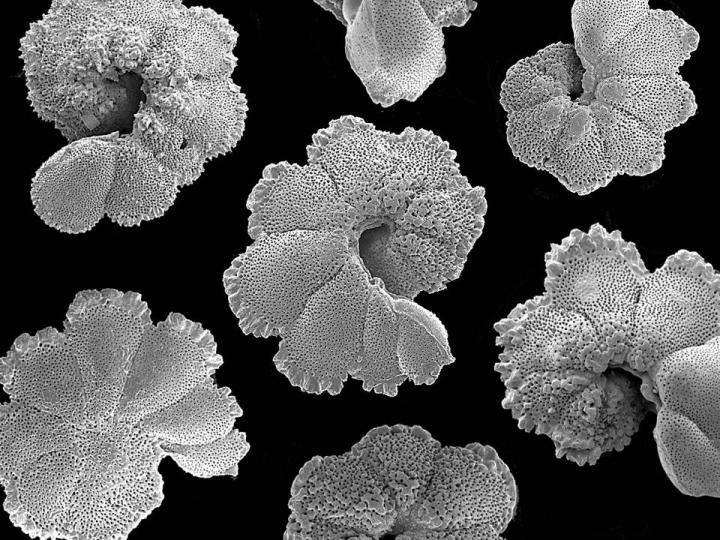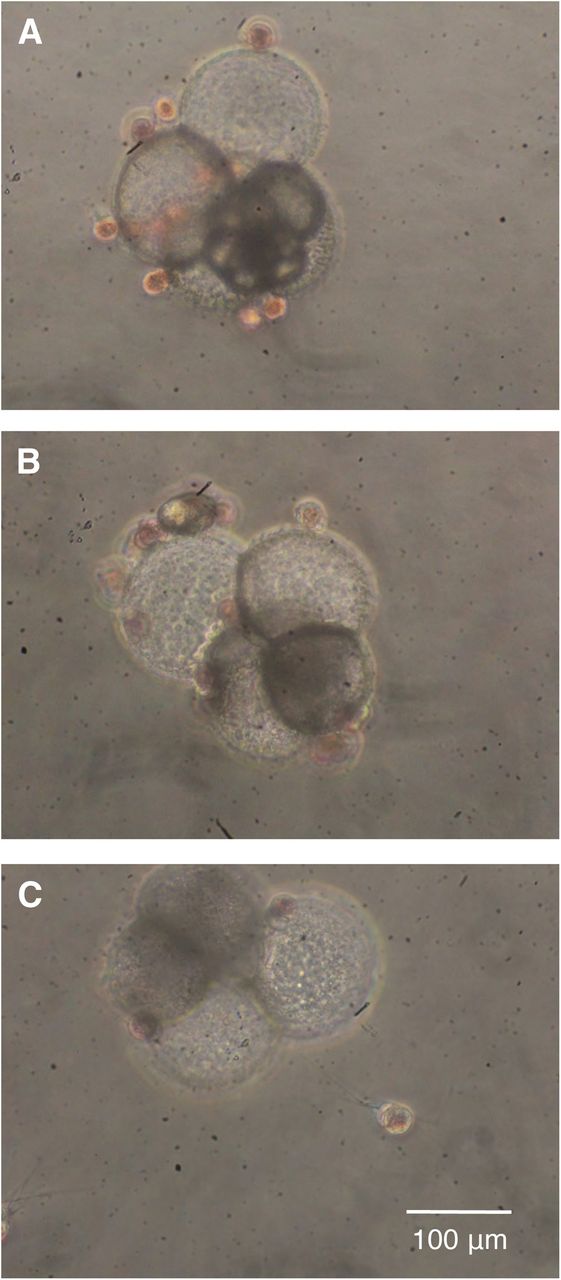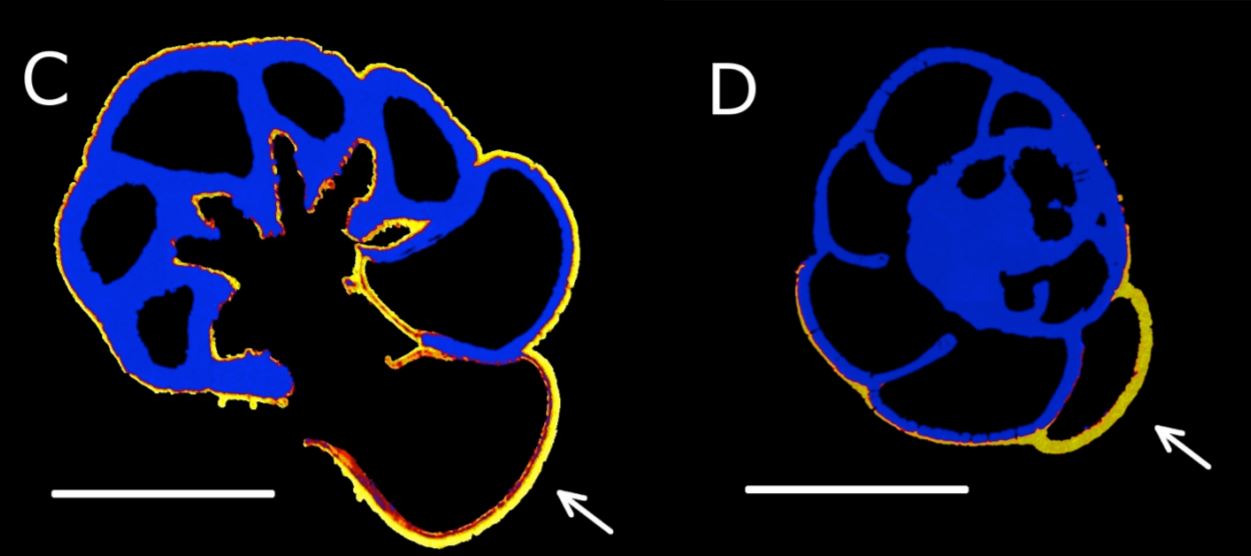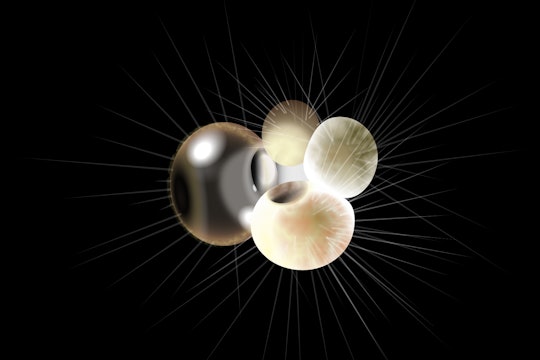A 540 million year-old microscopic protist sex mystery is solved
How tiny, shelled protists reproduce helps explain their strange evolutionary patterns
We know that evolution is responsible for Earth's incredible diversity of life. Yet, it can be difficult to understand precisely how evolution shapes diversity and how changing environments feed back and shape evolution. When looking at microscopic organisms, comprehending feedbacks among diversity, evolution, and environments can be even more complicated. These confounding difficulties can hinder reconstructions of ancient climates that could tell us more about modern climate change.
Foraminifera, or "forams," are single-celled protists with hard shells, called "tests." These tests take on many forms and are used as protection from predators. As they grow, foram tests record surrounding environmental conditions by incorporating isotopes and trace elements. After a foram dies, test chemistry can be used to reconstruct the environmental conditions where it grew.
But despite their integral roles in climate reconstructions and ocean carbon cycling, foram reproduction remains poorly understood. In the past century, forams only reproduced in a handful of studies, all of which reported sexual reproduction. Finding only sexual reproduction in forams was confusing as, normally, the mixing of genes during sex leads to greater diversity, and often speciation. Yet, after supposedly 540 million years of sex, there are very few species of forams. Why aren't there more?

Fossil planktonic foraminifera (40 million years old) from Tanzania
Paul Pearson, Cardiff University
A recent study by Yale University postdoc Kate Davis and colleagues unraveled this mystery. The team was originally looking at how forams incorporate trace elements as they age, and how it might allow researchers to reconstruct climate change in ancient water columns. During their experiments, they noticed something unusual — their forams reproduced asexually. No one knew forams could do that.
Ph.D. candidate Cait Livsey, a co-author in the study, says she'll never forget a text from Davis about the unexpected reproduction: "It was surreal. Both of us immediately knew that this was huge, but also had no idea what we had to do to make it worthwhile."
With a massive discovery at their fingertips, they quickly pivoted to design new experiments and document what was unfolding, pioneering the protocols as they went. As Davis explained, "We had to be willing to drop our original plan to move in this exciting new direction. We observed everything, wrote it all down, and just watched what happened.”
The researchers had to come up with a protocol for taking care of the baby forams. Ultimately they decided to provide two different diets through "light" and "dark" treatments. In treatments where vials were exposed to light, microscopic plants grew, and the baby forams fed on them. In treatments where vials were kept out of the light (dark treatments), baby forams fed on dead plant debris.

Foraminifera and children in first three days children were observed
Courtesy Catherine V. Davis
This led to the team's second amazing discovery. Normally, offspring look very similar when produced asexually and all their genetics come from one parent. However, as the asexually produced foram babies fed on either dead or live plants, the siblings grew into extremely variable sizes and shapes. Researchers believe the unique diets drove these differences.
“We were already shocked, surprised and excited to see something (asexual reproduction) that we weren’t sure existed, and in awe, as we watched them choose microenvironments, and grow into such different shapes and sizes," Davis explains.
Consecutive jaw-dropping discoveries made researchers momentarily question their observations, especially since baby forams could be hard to find amid the plant debris. According to co-author and Ph.D. candidate Hannah Palmer, "We tried to count the offspring in each vial, each day, but the numbers went up and down slightly. In the beginning, I felt like I was doing something wrong, especially since some were much bigger than others. I was constantly wondering if I took a picture of the wrong thing.”
With such tricky observations, the team considered what they witnessed, and whether it could only result from asexual reproduction. However, as explained in the study, alternative interpretations are unlikely. Fertilization from an outside source would be almost impossible, as gametes or zygotes couldn't pass through the seawater intake filter. Also, statistically, there just were too many offspring. Self-fertilization is also unlikely given a lack of characteristic changes in the parent.

Biogeochemistry of foraminifera. Forams incorporate calcium as they grow (denoted in yellow, arrows indicating new growth)
Nehrke et al 2013
Results from this study, especially the adaptability of forams and their choice between reproductive methods, point to greater complexity and resilience than previously thought. After mass extinctions, a sole foram could asexually produce an abundance of offspring capable of adapting to diverse marine environments. This explains how they survived hundreds of millions of years without speciation.
The next step for researchers using forams in climate reconstructions will be linking changes in size and shape to environmental conditions. When researchers understand how the environment influences size and shape, they can re-examine historical reconstructions, providing new insight into specific environmental drivers of evolution. For biologists, future work may look for asexual reproduction in other species of planktic protists and delve deeper into examining their environmental adaptability.
Beyond the worlds of climate reconstructions and biology, this study also holds a lesson for all young scientists. In a world increasingly demanding science with applicable outcomes, it’s okay for experiments to sometimes lead the way. In the words of Davis, this study “...was a different type of science. Hypothesis-driven science is great and important, and what we’re all used to ... but this was an opportunity to do old school, discovery, natural history science. It was one of the most fun experiments that I’ve ever done.”

